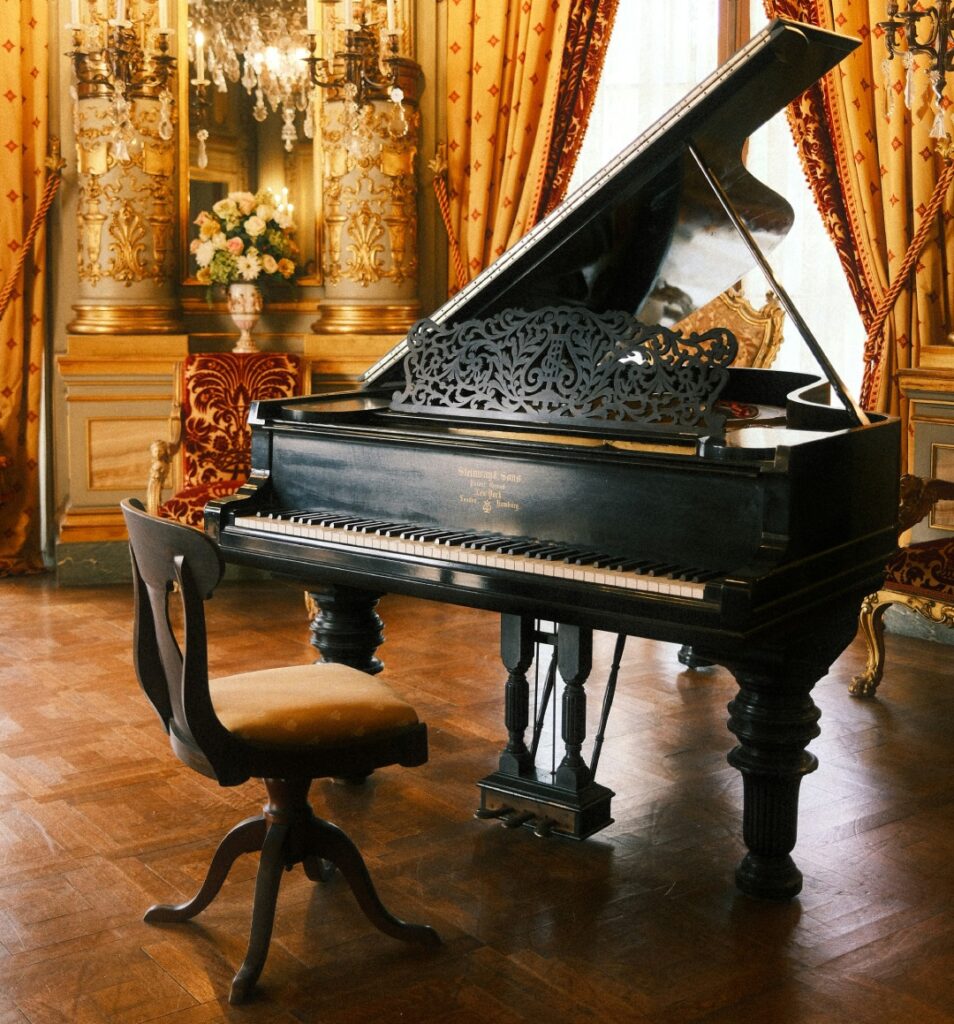What is ragtime?
Ragtime is a musical style that combines a steady marching beat with a syncopated melody. Ragtime was wildly popular when it first emerged in the late 19th century in America, and it continues to influence modern music and delight audiences across the globe.
Today, ragtime recordings are widely used in media (e.g. film, television, radio), dance competitions, video games, and online entertainment as well as a range business settings from online seminars to music in retail stores.
The roots of ragtime & its rise to popularity
Ragtime grew out of African American music in the Midwest and its captivating and enchanting style quickly spread across the United States.

Jovial dances and fast-paced rags first attracted crowds in the saloons of Missouri, Mississippi and St. Louis, where pianists played syncopated variations of folk songs and European marches.
After dazzling local audiences, ragtime quickly spread across the United States, as minstrel shows and vaudeville performers brought the captivating style to theatres and dance halls.
This new form of music saw its global debut at the Chicago World’s Fair in 1893. Here, ragtime wowed international audiences as millions of people passed through the fair gates, mesmerized by its magical, playful style.
Following the fair, sales of sheet music and piano rolls surged, and ragtime secured its place as a timeless treasure in American culture. Its lively syncopation and marching beat continue to inspire musicians and delight audiences well into the modern age.
What makes ragtime special?
Unlike the steady marches of the 19th century, ragtime breaks with musical tradition by highlighting beats that fall out of sync. The emphasis on the off-beats in the melody is known as syncopation.
Syncopation gives ragtime its “ragged feel” and makes it delightful to the ear, heart and mind. The surprising rhythms of ragtime once infused excitement into saloons and bars, and the spirit of ragtime continues to captivate audiences today.
Different types of ragtime
Classic ragtime
As many rags of the late 19th and early 20th century were written by brilliant composers, it took tremendous skill to play them well. Due to the inordinate difficulty, only a handful of people could perform and enjoy ragtime in the comfort of their homes.
In an era before radio and piano rolls, this meant that most classic ragtime songs achieved only moderate commercial success – apart from a few hit pieces such as “The Entertainer”, “Maple Leaf Rag” or “Alexander’s Ragtime Band”.
Many pieces from lesser-known composers were never formally published, have been lost, or were rediscovered by family decades later.
These classic rags are a treasured prize for nostalgic collectors, and remain invaluable to historic venues, old movies, vintage shops, museums and businesses looking for that early 20th century feel.
| Classic ragtime | Modern ragtime | |
| Syncopation | High level of syncopation | Light to high level of syncopation |
| Bass | Steady march-like bass | Retains steady bass, but may use walking or stride patterns |
| Structure | Multi-section form (e.g. AABBACCDD) with 16, 20 or 24 bar phrases | More varied structures, but repetition remains common |
| Time signature | Typically 2/4 or 4/4 time | Can be 2/4 or 4/4, or more experimental time signatures such as ¾ time (ragged waltz) or 6/8 |
| Influences | Marches (Sousa), cakewalks, African American dances | Same as classic ragtime, plus influences from pop, rock, jazz, swing and other modern styles |
Modern ragtime
While classic rags attract interest mainly from historians and collectors, modern ragtime can be a real crowd pleaser. It meshes with new styles like pop, jazz and rock to create a unique blend of classic syncopation and distinctly catchy melodies.
Contemporary rags are popular both among piano players and businesses looking to licence music, as they combine the timeless treasures of early 20th century music with the communities in which we live today.
Benefits of modern ragtime music
Modern ragtime brings several advantages over classic rags that were composed at the turn of the previous century.
Contemporary rags align more closely with current musical tastes and the preferences of younger generations. Today, sheet music is of high quality, and modern microphones and speakers deliver a superb listening experience.
Thanks in part to technology, pianistic virtuosity is no longer required to perform ragtime music. In addition to great recordings, there are simpler arrangements and ragtime covers that make the style accessible to musicians of all skill levels and bring smiles to the faces of hundreds of listeners.
Unlike many historic ragtime pieces, where copyright status may be unclear, we know who composed and performed a modern rag, and ownership is well documented. This makes it easy for businesses to licence ragtime music, while enjoying the peace of mind that their licence meets all the relevant legal standards.
Where can I find original ragtime songs?
We offer a full collection of original ragtime music. Travel back in time to the early 1900s with our classic rags, enjoy our modern ragtime pieces, and see how our ragtime covers add a playful twist to popular songs. Businesses can access and license our timeless pieces with confidence, knowing every track has been carefully curated for its authenticity and originality.
Take a look at our collection.
How do I licence ragtime music?
You can usually licence ragtime pieces directly from a ragtime composer or publisher. Before signing a licencing agreement, consider what rights need you need (e.g. performance, reproduction, distribution or synchronisation), and how you will use the music.
Learn more about the licences Lion Ragtime offers to businesses.
